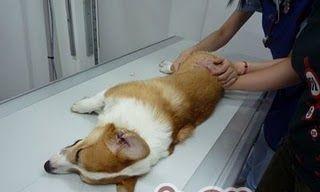Golden Rather puppies
Canine Hip Dysplasis (CHD) is a serious genetic disease of dogs. The incidence of golden retriever, Labuado, German black back, and chosal dogs is the highest. This may be due to the lack of understanding of the disease in China, and it has not attracted much attention in breeding in breeding. Such cases are currently on the clinic.
1. Cause
The main is genetic factors. CHD's cause and pathogenesis are not yet clear. Some people think that CHD is a biomeChanical Disease, which is due to the inconsistent rapid growth of the main muscle in the pelvis. This imbalanced force forced the hip joint to tear away, and then stimulated a series of changes. Eventually manifested in hip development and degenerative joint disease.
Some people think that the pubic muscle spasm or shortening causes the femoral head to the upward force of the acetabular edge, causing the acetabular edge to skew up and occur.
2. Clinical symptoms
The clinical symptoms of CHD generally appear between April and December, but there are also a few dogs who appear between 12 and 36 months. Some dogs have CHD but do not show any symptoms in the short term. CHD's clinical symptoms have a large range of changes, because the pain at the hip joint has a very mild discomfort to severe lameness.
mainly manifests as:
1) Happy to lie, unwilling to exercise; especially unwilling to go up and down the stairs
2) Stand hard after lying down
3) Seed a three -legged jump when running, like a little rabbit
4) The hips are twisted drastically when walking
5) Driven hip joints abnormally sensitive
If you want to confirm the diagnosis, take the dog to the hospital for further examination and shoot X -ray.

CHD pathological features are femoral heads and acetabular discomfort; shallow hip, small or increased neck and dry corners, and joint relaxation. Due to the relaxation of the joints, the excessive friction between the femoral head and the back of the acetabular back, resulting in a double increase in the force of the back edge of the acetabular acetabular. At the same time, the internal synovial fluid increases. Many cases of hip joints are semi -dislocated.
